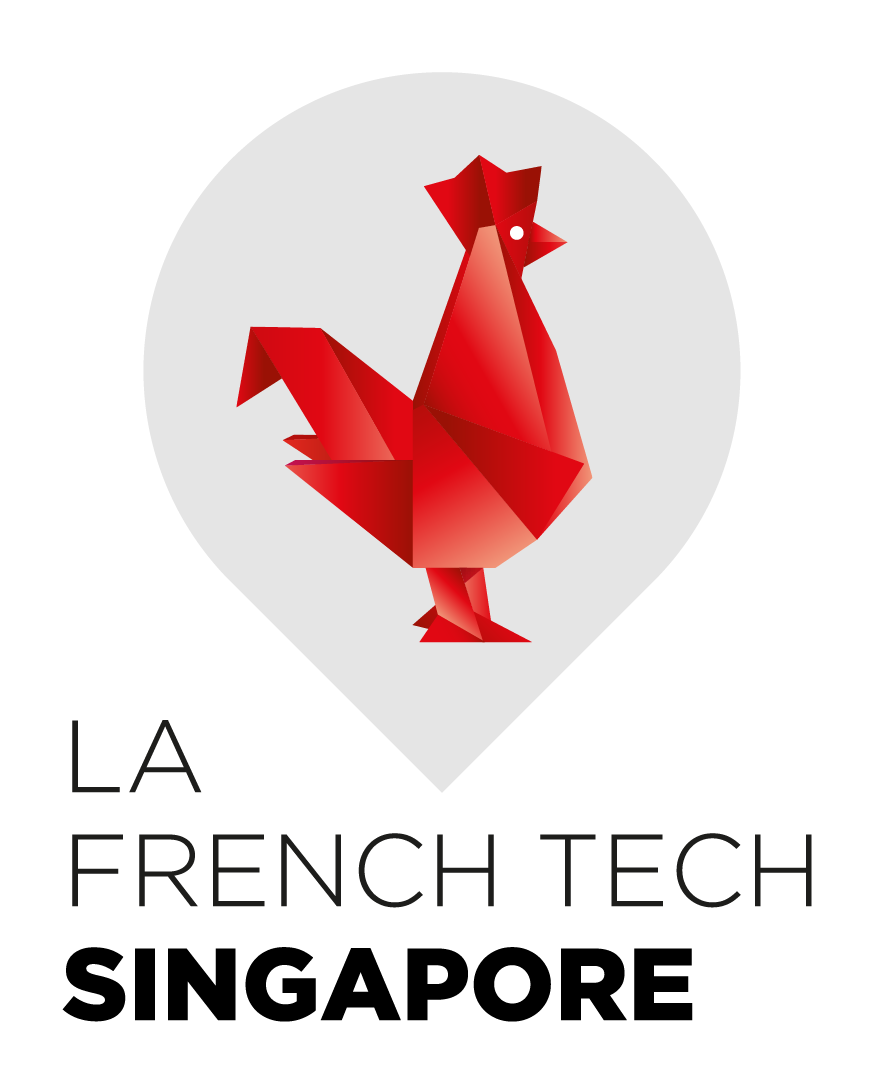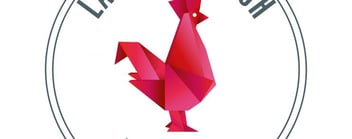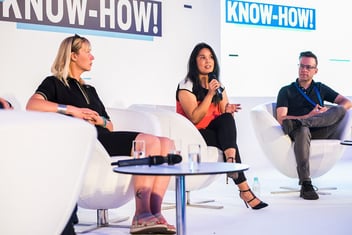Hi Amelie, so what do you do and what brought you to Asia?
Hello ! I am an innovation coach and trainer in design thinking. I just started my company 3 months ago, after having worked for almost 3 years in the innovation lab of Standard Chartered Bank as an Entrepreneur in Residence. My mission is to help organisations, big and small, reinvent the way they think and work, so that they can build their own innovation strategy, portfolio of innovation initiatives and capabilities.
I am also a certified Instructor in Design Thinking from Luma Institute. I feel passionate about it and I want to help businesses implement it and scale it..
I am an entrepreneur. I co-founded multiple startups (Netvertising, ContactOffice, FlashDate, etc.) and started Internet Attitude, a Venture Capital fund in 2010. I also have 10 years of working experience in corporates. I can now analyse business challenges from different perspectives.
I moved from Belgium to Singapore in 2013. While most of my “colleagues” in startups dreamt about the Silicon Valley. For me Asia was more untapped, with greater potential for growth and easier access to skilled manpower. As an European, I have an advantage in this region because I understand fragmented markets and am used to deal with different languages, cultures, regulations, tax systems.
Lots of organisations are already innovating, have innovation labs, startup accelerators, design studios, etc. What do you think is lacking today ?
“75% of CEOs rank innovation among their company’s top 3 strategic priorities.” “Yet only 27% of leaders feel their organizations have mastered the elements needed to innovate successfully.” (Price Waterhouse Coopers)
There is a lot of FOMO (Fear of Missing Out) that leads to isolated innovation activities. Innovation should be a critical strategic component, with a consistent and integrated approach, aligned with the business strategy.
Innovation is only a means not an end in itself. Its aim is to create value over time, by delivering better today, building for tomorrow and inventing for the future.
Therefore, it is crucial to understand what purpose can various innovation initiatives serve: is it an internal activity? Is it an external engagement with the startup ecosystem? And from there, we can develop a consistent and integrated approach on how to build a balanced portfolio of initiatives that delivers return on investment for mid and long term, allocate appropriate resources and capabilities to each of them and define KPIs.
That’s why I have created a framework to help organisations build their own innovation strategy that balances business growth forecast with today’s reality.
How does design thinking help achieving these innovation goals?
Too often, we think innovation comes from digitalisation or adopting new technologies. But actually, according to Nielsen or Harvard Business School, more than 80% of new products or services still fail and new technologies can not be the answer
In order to design the right solution for the right problem and achieve innovation, design thinking helps to find the right balance between the desirability of a solution – meeting the users’ needs – , the viability – achieve better outcomes and deliver impact for the organisation –, and the feasibility – mitigating the risk of failure and bringing the solution to the next level thanks to technologies.
Therefore, as an Innovation coach, I believe that design thinking needs to be used along with value proposition design, lean business model canvas, or Agile to create new products, services and new business models.
Do all industries or organisations have to innovate?
People tend to confuse ‘innovation’ with ‘invention’.
Innovation comes from Latin “innovare” which means “make”-“new”, or the action of renewal or change. For this renewal to take place it is necessary for people to change the way they think, work or make decisions.
So, where “innovation” is about the “how”- a way of doing it, invention is the “what”.
Innovation is progress, it has to apply to each entity within an organisation and its serve people better.Nowadays it is just happening faster, as we are evolving faster.
Everyone needs to reinvent the way they think and work to adapt to this fast changing world :
– Startups are tapping into unfulfilled needs and want to disrupt existing industries
– Public services or the military are responsible for the Maslow pyramid’s basic needs : safety, education, health, wellbeing,…
– NGOs and charities are aiming at greater impact and more social good
Working with all these different players is what makes my job so exciting and so diversified.
Whose duty is it to innovate?
We are entering a new age in which everyone’s ability to innovate is going to matter as much as their ability to read, write and do basic arithmetic. Today it is not only down to specialists, innovation coaches, agencies, Entrepreneur in Residence, technologists or Chief Innovation Officer. It is also everyone’s responsibility to be able to adopt new ways of working and thinking.
I discovered Design Thinking and it gave me the mindsets and tools to create that innovation literacy.
In recent years, I had the opportunity to apply this methodology at Standard Chartered Bank, Prudential, Jones Lang Lasalle, Certis Cisco or even in the public sector at Ngee Ann Poly. More recently I have a talk at the Ministry of Defence in Singapore. Design thinking tools a common language for innovation among all attendees.
I even apply it on my 4 kids to get insights on their day at school or prioritise what we want to do on holidays. And they love Post-it notes 😉
How dare you to be a woman in innovation and tech?
This is who I am. I am an entrepreneur, I have invested in businesses, and worked in very tech-driven organisations. I was often the only woman in the room.
I believe that women are empathic, collaborative and flexible. And these qualities happen to be key skills in a business. To be successful you need to understand customers’ needs, involve the right stakeholders and build partnerships, and the question yourself without putting your ego at stake.
Last but not least, women are often good at navigating through uncertainty and innovation is exactly about that:achieve better outcomes while accepting the fact that it might not look like what we initially expected.
How do you bring more diversity in innovation?
Innovation is not just about businesses but also about a personal journey. Diversity in innovation can be as simple as believing in someone’s potential.
Let me share with you what I consider my biggest personal success in my over 20 years career. One day, I meet a young woman in her early 20s. She had no university degree and was not very confident about what she could achieve in life. But I could feel she was a passionate person with drive and resilience. The next day, I offer her a job in my startup. For 2 years, I shared all I knew with her, mentored her, pushed her out of her comfort zone. And one day, she came to me and told me that she is resigning to start her own business. Her startup became more successful than mine.
If we open our eyes, there are plenty of opportunities, big and small, to help people grow around us, women and men. Each day, if I can have a positive impact on only one person, through a coffee, a chat, a training, a workshop… then I am living a meaningful life.
Amelie, thank you !
Get in touch with us @ womenfrenchtech at gmail dot com
In collaboration with Amel Rigneau & Sophie Guo




